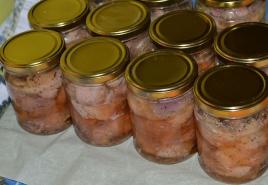Why is cherry wine bitter? How to remove bitterness from wine
At the first manifestation of a bitter taste in wine, action should be taken immediately, otherwise the entire batch of wine will be spoiled. Bitterness in wine appears for a reason, but due to non-compliance with the technological process; most often such mistakes are made by novice winemakers. Unfortunately, if time is completely lost and the bitterness has become strong, then it will no longer be possible to save the wine. There are effective methods, but they are recommended only in the initial stages, when such bitterness only appears. To avoid such troubles in the future, you should know the main reasons that cause bitterness, what preventive measures exist and how to remove bitterness from wine.
Incorrect juice extraction
This situation is typical in 50-65% of cases for wine made from cherries, grapes, apples, but is not excluded when using other fruits and berries. The seeds of the berries contain a sufficient amount of tannins and tannins; as a result of crushing (when the juice is squeezed through a press), they penetrate into the pure juice; subsequently, after fermentation is complete, they provoke the appearance of bitterness.
To prevent, simple preventive actions should be followed: remove the pits in advance, where possible (cherries). In other cases, use a gentle squeeze that will not damage the seeds.
Bitterness can be eliminated by “binding” tannins with egg whites. To do this, separate the protein, beat it, and then add it to the finished wine in a ratio of 100 mg per liter of wine product. The resulting composition is carefully mixed and left alone for a couple of weeks until a dense sediment appears. After completing this process, the wine is carefully poured into a prepared clean container using a siphon or thin tube.
Rotten raw materials and overexposure of wort on pulp
If, when selecting berries for winemaking, even a couple of rotten berries were missed, or the young wine was not removed from the pulp in time, then the problem with bitterness will become evident.
Preventive measures consist of careful selection of raw materials, as well as strict adherence to all technological processes, including the timing when it is necessary to remove the pulp.
Manifested bitterness is removed with the help of bentonite. One liter of wine requires about 3 g of white clay. Bentonite is poured with water, which is 10 times its amount, everything is mixed, and left alone for 12 hours until lime forms. After this, a small amount of water is added so that the composition becomes liquid and poured into a vessel with wine in a thin stream. The process of clarification and elimination of bitterness lasts about a week, after which the wine is removed from the sediment.
Long infusion on sediment
The cause of bitterness can be explained by improper filtration, since yeast at the time of decomposition can worsen the taste of the product.
From the above it is clear that the wine is promptly separated from the sediment.
You can save the wine by adding egg white or bentonite according to the instructions described above (in some cases, each method is used in turn).
Wine contamination
Microorganisms that can cause vinegar souring or mold also have a negative effect on the wine, which manifests itself in the form of bitterness.
Strict adherence to instructions and adherence to technological processes will protect against such problems.
Wine is “treated” by pasteurization, during which microbes die due to high temperatures. The container with wine is placed in a saucepan, filled with water to the level of the neck, and heated to 60°C. This temperature is maintained for 5 minutes, after which the fire is turned off. The container is removed from the water only after it has cooled and left alone for 5–6 days, after which it is removed from the sediment.

Overexposure in barrels
When wine is stored for a long time in oak barrels, it becomes oversaturated with tannins, resulting in bitterness that is difficult to remove.
When using barrels, check the taste of the product once a week so as not to miss the period when bitterness begins to form.
At the initial stage of bitterness formation, clarification with bentonite is effective. In cases where the deadlines are missed and the bitterness has become clearly noticeable, the taste is neutralized with sugar and alcohol. They are added to the total mass up to 10–15% of the total volume.
If none of the methods for removing bitterness in wine helped eliminate it, then such wine is distilled into moonshine. The result is an interesting fruity brandy.
Most likely, you will also be interested in this
Why is homemade wine bitter? What should I do?
Often, home winemakers spoil the taste of wine by keeping the drink in improper containers, that is, using wooden barrels, or anything else that leaves an aftertaste, this should never be done, the wine must ferment and be stored only in glass bottles, then the taste will be clean and will not taste bitter.
so that the wine does not give off bitterness (some varieties of grapes), before pressing it is necessary to separate the berries from the bunch, since bitterness is what causes it
Homemade wine can be bitter due to improper packaging, but wooden containers are often used, which can give off an aftertaste; it is better to use glass exclusively.
Bitterness can also be due to too fine crushing of the raw material along with the seeds, which give bitterness - here either remove the seeds or crush them gently.
The most common reason that wine is bitter is that the berries are crushed too much and pressed through a press. Grape seeds contain a lot of tannins and tannins. These substances get into the juice and after fermentation, homemade wine begins to taste bitter. Therefore, it is better to crush raw materials without seeds or using gentle methods that do not damage the seeds. You can try to remove the bitterness with egg white. You need to beat the egg whites with a whisk and add to the wine at the rate of 100 ml. for 1 l. drink Mix carefully and leave for 2-3 weeks until the sediment completely falls out. After this, drain the wine from the sediment through a thin tube into another clean container.
What to do if homemade wine is bitter
To reduce or remove bitterness in wine, you may need the following tool or substances:
fine sieve;
undiluted alcohol;
blender with a special attachment for chopping berries;
Oak barrel;
Wine may become bitter due to the presence of crushed fruit seeds in the must, so you need to get rid of them during the preparation of raw materials. If such an approach to preparing raw materials is impractical, for example, for rowan with a small core, then the berries must be thoroughly crushed or ground through a metal sieve. Freezing them will help reduce the impact of the seeds of some types of raw materials.
If the above operations were carried out on time (draining the sediment, removing seeds), and the drink still produces bitterness, then you need to pour the liquid into a well-washed and dried oak barrel, add a little alcohol and store it in a wine cellar for 6 months. If there is no such capacity, then use crushed oak bark (for every three liters of wine you need to add a teaspoon of this substance). The bottle is sealed and stored for six months in a dark and cool place. After the above period has expired, the bottle is removed from storage, the wine is drained from the sediment, filtered through cheesecloth and a teaspoon of glucose is added there.
If the necessary measures are not taken in a timely manner, bitterness in homemade wine can ruin an entire batch of prepared alcoholic beverage. As a rule, its appearance is observed due to a gross violation of manufacturing technology. The taste of wine can be corrected only in the early stages - immediately after bitterness appears. At the same time, in the later stages of alcohol maturation, it becomes almost impossible to eliminate such a problem.
Causes and methods of eliminating bitter taste
The situation when wine tastes bitter is familiar to almost every novice winemaker. This disappointing result could be due to several reasons. Consequently, methods for eliminating bitter taste will also be different in each specific case.
Incorrect juice extraction technology
This is one of the most common situations, causing the problem in more than 50% of cases. It is typical for cherry, grape and apple wines, but can manifest itself when using other berries and fruits. The problem arises as a result of excessively strong grinding of the raw materials used and subsequent squeezing using a press. This technology leads to damage to the integrity of the seeds, which contain large amounts of tannins and tannins. It is they that, when they get into the juice, lead to the appearance of bitterness.
Prevention.
Berries or fruits should be crushed without seeds and in more gentle ways that do not damage the seeds.
How to get rid of the problem.
Using egg whites removes some of the tannins. Break 2 chicken eggs, from which the whites will separate, and beat with a whisk until foam appears. In this state, it is added to grape wine in a ratio of 1 to 10 or 100 ml of protein per 1000 ml of drink. The alcohol is thoroughly mixed and transferred to a dark place for 14–20 days until a sediment forms. After this, the wine is filtered using a small rubber tube and bottled.
Spoiled raw materials and overexposure of wort in pulp
Even a few rotten or moldy berries that are processed can cause a bitter taste. In addition, this development of events can be caused by excessive time of aging the juice on the pulp, as a result of which the pulp begins to partially rot.
Prevention.
For winemaking, you need to use only freshly picked berries and fruits. Strictly follow the recipe and drain the juice from the pulp in time.
What to do when such a situation arises.
Using bentonite to clarify the drink will help. It is used in a ratio of 3 grams of the substance per 1000 ml of finished wine. The white clay is poured with cold water, mixed and left for the next 10–12 hours, during which time the bentonite becomes lime. After this, a little more water is added to dilute the mixture and make it more liquid. The resulting liquid is poured into the wine in a thin stream. The container is transferred to a dark place and settled there for the next 5–7 days, after which it is removed from the sediment.
Delayed wine filtration
Long-term settling on the lees is one of the possible reasons why bitterness appears in wine. During the decomposition process, waste products from yeast and fungal cultures give the drink a rancid taste.
Prevention.
Timely and thorough removal of sediment.
How to remove bitter taste.
Clarifying a homemade drink using bentonite or egg white according to the above methods.
Development of pathogenic microflora
Infection of the wort with pathogenic microorganisms provokes its souring. At the same time, the appearance of mold in the early stages and other diseases of wines lead to the appearance of a slight bitterness.
Prevention.
Maintaining the sterility of containers and all related equipment. Strict adherence to the recipe and technology of wine making.
How to fix the problem.
Heat treatment of wine with a bitter taste, during which most of the pathogenic organisms die. Bottles of wine are hermetically sealed, placed in a saucepan and filled with cold water up to the neck. After this, the pan is placed on the stove, and the water in it is heated to 55–60 degrees Celsius. The required temperature is maintained for 5–7 minutes. After this, the container is removed from the heat. The bottles are removed from the pan at the moment when the water in it has cooled to 18–24 degrees Celsius. After 5–6 days from the end of the procedure, the wine is drained from the sediment.
You tried, you tried! You were already imagining how you would treat your family and friends with your own wine. Compliments and praise were already ringing in your ears, but then such a failure, the wine is bitter. What to do?
It is impossible to get rid of the bitter taste. Do not increase your grief by stupidly wasting time, money and effort. Tips on how to remove bitterness from the taste of wine are a bad retelling of fusel oils. If it turns out that way, pretend it was meant to be that way. Who needs subtleties in wine technology? The result is important.
A bitter taste can be corrected by masking it with other flavors.
Correcting the taste of red grape wine

Prepare a wine drink based on bitter wine. There are many options. If it’s red, what’s wrong with mulled wine? His recipe is simple and original, and you and your guests will be so hot from the fiery wine that they will not feel the bitterness behind the taste of spices.
: for 1 liter of red wine you need to take 3-4 tablespoons of sugar, 2-3 cinnamon sticks, 2-3 centimeters of ginger, 2-3 star anise, 2-3 cardamom seeds, 3-4 clove buds. Spice powders and fruits are not suitable. If some spice is missing, it doesn’t matter, and without one or two components everything will turn out great.
The wine is heated in a wide bowl and all the ingredients are added. The wine with spices is brought to a boil. Removed from heat. Covered with a lid. Leave for 10 minutes. Serve hot.
You will pleasantly surprise your guests, and they simply won’t notice the lack of wine.
Correcting the taste of white grape wine
It’s easy to fix the bitterness by making a trendy drink – sangria. This is a drink with added fruit.
Recipe: White wine – 1 liter, sugar – 3-4 tablespoons, lemon – 1 piece, orange – 1 piece, mint – 4-5 sprigs.
In a free, beautiful glass container, the liquid is mixed with sugar until it is completely dissolved. Fresh, washed fruits are cut into beautiful slices and placed in a vessel with wine. The drink is left for 1 or 2 hours. You need to cover it with a woven napkin. Serve sangria with pieces of ice or simply chilled. Mint is placed in each glass before drinking.
Any wine, not just grape, is suitable for making sangria.
The strong bitterness in homemade wine cannot be masked. If the wine is strong, distill it into moonshine. Its reserves are never superfluous.
Why is wine bitter? Causes:
Every failed winemaker wonders why it went rancid. Not so many reasons  a lot of:
a lot of:
1. Obtaining juice with damage to seeds and seeds. They often taste bitter.
2. Fruits and berries were difficult to pick. Leaves, sticks, scallops have a bitter taste.
3. The wine stood over the sediment.
All these reasons can be called simply - violation of cooking technology.
Be careful and your homemade drinks will be second to none.
Many novice winemakers are faced with the problem of bitterness in wine. Because of it, it happens that all the work on making wine goes down the drain, and the wine is poured down the drain or sent for distillation. But, if you look in more detail at the causes of bitterness and their elimination, you can save more than one liter of ready-made wine...
So, one of the reasons, most common among home winemakers, for the appearance of bitterness in wine is an excess of tannins, bitter and astringent substances, tannins, which are contained in the skins and seeds of grapes. Usually these substances are useful to us, they give the wine a tart taste and promote clarification, but their excess, as mentioned earlier, makes the product bitter and the color (of white wines) brown.
 To prevent this effect, from the very beginning of wine making, it is necessary to carry out careful crushing and “soft” squeezing of the juice using a press with a basket (can be purchased at most stores with goods for home winemaking) or another gentle method, but crushing the berries using a drill with I advise you to forget about the nozzle for stirring construction mixtures, as recommended in some sources. Read more about this in the first day of winemaking. The most important thing in these processes is squeezing out the juice without destruction. Squeezing the juice can also be done using a meat grinder, but this will result in a large amount of bitter seeds and peels getting into the wine, and with them excess tannins. Crushed seeds are our main enemy in this matter; it is grape seeds that contain the coarsest and most bitter tannins. And they begin to give off bitterness either when mechanically destroyed, or when maceration (infusion on the pulp) is too long without removing them.
To prevent this effect, from the very beginning of wine making, it is necessary to carry out careful crushing and “soft” squeezing of the juice using a press with a basket (can be purchased at most stores with goods for home winemaking) or another gentle method, but crushing the berries using a drill with I advise you to forget about the nozzle for stirring construction mixtures, as recommended in some sources. Read more about this in the first day of winemaking. The most important thing in these processes is squeezing out the juice without destruction. Squeezing the juice can also be done using a meat grinder, but this will result in a large amount of bitter seeds and peels getting into the wine, and with them excess tannins. Crushed seeds are our main enemy in this matter; it is grape seeds that contain the coarsest and most bitter tannins. And they begin to give off bitterness either when mechanically destroyed, or when maceration (infusion on the pulp) is too long without removing them.
You also need to be careful not to overexpose the wine after quiet fermentation on the lees. This can also add excessive bitterness to the wine.
There are other causes of bitterness, but in home winemaking in 9 cases out of 10 it is precisely inaccurate crushing, overexposure on pulp and lees, and excessive oxidation.

If it has already happened that your wine is bitter, there is no need to be upset.
To eliminate this negative effect, it is necessary to “bind” excess tannins. To do this, “binding agents” are used, which attach tannins to themselves and precipitate with them to the bottom of the container. The most accessible and effective two “agents” are egg whites and polyvinyl chloride-based preparations.
Protein is one of the oldest and most widely used "binding agents" in both home and commercial winemaking. It is usually added to red wines (or fruit wines, which contain a lot of tannins) in a concentration of 50 to 250 milligrams per liter. Before use, the egg whites are lightly beaten with a whisk and added to the container with the wine with thorough but gentle stirring (so as not to unnecessarily aerate the wine). The container with wine is then left in a calm state for a period of several days to several weeks, until the sediment completely falls to the bottom. As soon as this happens, it is necessary to siphon the wine into another clean container where it will ripen.
There are also industrial preparations based on proteins of various origins: from casein (milk protein), gelatin and ending with pea protein. But working with such preparations requires skill and considerable experience of the winemaker, as well as the presence and careful adherence to recommendations for their use.
Polyvinyl chloride is a synthetic polymer powder; preparations based on it are sold in stores for home winemakers. As a rule, it is added to wine in volumes from 120 to 400 milligrams per liter with thorough mixing. Then the wine is also allowed to sit for a while, and then it is poured into another clean container. In addition to softening the bitterness, in this way it will also be possible to remove brown tones in white wines.
To choose the best method and amount of substance to add, you must first make several tests on a small volume of wine to choose which method is best suited for your wine. And also select the required concentration of the reagent. After all, this is much more profitable than pouring out the entire batch.
© Igor Zaika
2013






